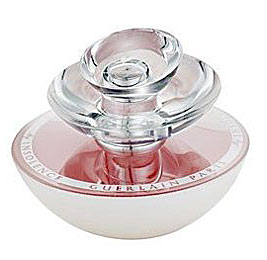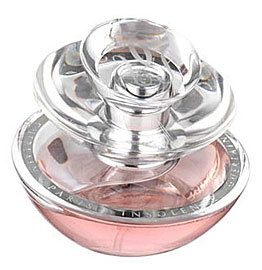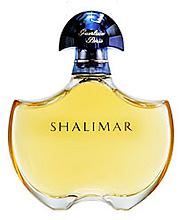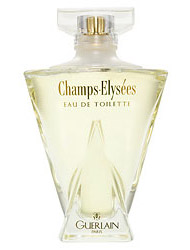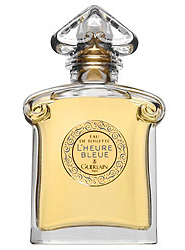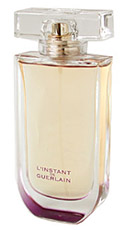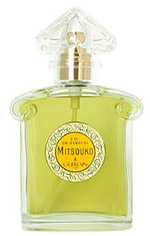Samsara is a lovely Guerlain from 1989. I often think it’s one of the last of the old Guerlain style before the fragrance house underwent their “modernification” and subsequent sale to LVMH. There’s a familiar Guerlainess to Samsara that’s been very toned down for the mass marketed recent fragrances. 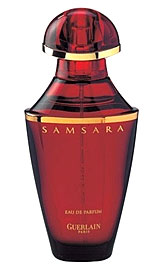
In Bottle: Clear, dense, and woodsy. I can smell a hint of Guerlainess (if it wasn’t before, it is now a word) in this that reminds me of Mitsouko. Strange how so many things Guerlain makes either reminds me of Mitsouko or L’Heure Bleue. They were doing something right, I guess.
Applied: Initial scent reminds me of–and don’t laugh–pickled kumquat. Yes, salty, tart, citrusy pickled kumquat. Strange connection but there you have it. It was made and cannot be taken back now. Anyway, after my awkward experience with the opener, which honestly lasts a couple of seconds, Samsara turns into a smooth, spicy, sandalwood fragrance with a clove underneath. Samsara continues on its woodsy clovey journey picking up faint notes of jasmine here and there and discarding them just as quickly. The iris does make a brief and masked appearance lending the fragrance a sharpness too. The final dry down is a powdery, dry vanilla woodsy fragrance with the clove lingering until everything else is gone.
Extra: The one really great thing about Samsara is its projection. Put some of this on and you will project like crazy. Not quite as far as Shalimar but a pretty respectable distance for sure.
Design: I know some people hate the way this bottle looks. I think it’s okay. Not my favorite, but certainly not my least favorite. It’s got a nice deep redness to it that really reflects well on what kind of fragrance it holds. I like the shape too, easy to hold and easy to spray. flimsy plastic cap though. I really wish Guerlain wouldn’t use those so often these days.
Fragrance Family: Woodsy Oriental
Notes: Jasmine, ylang-ylang, jasmine, sandalwood, narcissus, tonka, iris, vanilla.
Apparently, once upon a time, Samsara used to include real Mysore Sandalwood. Sandalwood being a lovely smelling tree that’s been harvested so much that it’s now endangered. The sandalwood you encounter in perfumes? Most likely a synthetic from one of two very popular sandalwood synthetics.
Reviewed in This Post: Samsara, 2009, Eau de Parfum.




